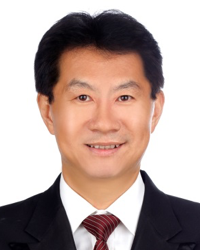 ' . "\n";
echo "
' . "\n";
echo " ' . "\n";
echo "
' . "\n";
echo "Join us for the fourth annual BiTS event in China focused on solutions for electronic test!
Everything from wafer to final and beyond including module, system-level, and product test.
TestConX China will feature technical presentations highlighting new regional presentations along with presentations from BiTS award winning authors.
Connecting electronic test professionals to solutions
Over the course of its twenty-year history, BiTS has established itself as the preeminent event for test consumables, test cell integration, and test operations. BiTS has also grown from packaged semiconductor “final” test and burn-in to encompass all practical aspects of electronics testing including validation, advanced packaging testing, system level test, module test, and finished product test. Participation has grown from the semiconductor industry to the electronic manufacturing services (EMS) industry. The new TestConX name reflects this broader scope and increased reach.
Each one-day event will deliver our core values of LEARN, EXPLORE, and SHARE. There will be plenty to LEARN in a strong technical program that includes a keynote, a market overview, and nine excellent technical presentations. The learning will continue as you EXPLORE the TestConX EXPO where local and international vendors exhibit the latest in test hardware, equipment, and consumables. Lastly, TestConX has been structured to encourage networking with over three hundred of your colleagues – from the scheduled breaks to the buffet lunch – to enable you to SHARE your challenges and solutions with your industry peers. The person you meet at lunch may have the exact solution you are looking for!
New for 2018: This year there will be two TestConX China events: Tuesday October 23 at the Hilton Hotel in Suzhou and Thursday October 25 at the Raytour Venice Hotel in Shenzhen.
Please see the detailed agenda below for this great event!
Tuesday October 23
Hilton Suzhou - Suzhou, China
275 SUZHOU AVE EAST INDUSTRIAL PARK
SUZHOU, 215028, CHINA
+86-512-62928888
Suzhou TestConX EXPO Directory
Thursday October 25
Raytour Venice Hotel - Shenzhen, China
9026 Shennan Road, Nan Shan District
Shenzhen, Guangdong, 518053, China,
+86 755 2693 6888
Shenzhen TestConX EXPO Directory

